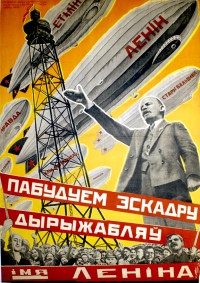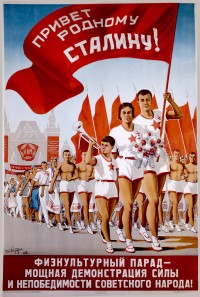Kibardin, Georgii Vladimirovich
Born 1903, Viatka Governorate, Russian Empire; died 1963 Moscow, USSR
Georgii Vladimirovich Kibardin was born in a desolate part of the Russian Empire. In his youth, he determinedly ventured to Moscow where he attended VKhUTEMAS (Higher Art and Technical Studios) studying under the tutelage of the noted Russian artist, Ilya Ivanovich Mashkov. In the 1920s, Georgii Kibardin attended courses at AKhRR (Association of Artists of Revolutionary Russia). In 1923, he joined its successor association and graduated that same year.
Kibardin began to exhibit professionally by 1928 although his first solo exhibition did not take place until 1951. His artwork was featured in several USSR exhibitions including, the Academy of Arts exhibit “Art to the masses” (1929, Moscow); The Poster in the Service of the Five-Year Plan (1932, Moscow); the 5th Exhibition of Moscow Painters (1937), 20 years of the Red Army and Red Navy (1938, Moscow), in addition to his participation in All-Union and Republican exhibitions.
Within the confines of the Socialist Realism art form of the USSR; it was in the 1930s that Kibardin (like other artists of his era) made artistic trips to collective farms and construction sites to acquire visual knowledge that would serve as the base for thematic painting of industrial landscapes. He also worked in graphic art and in mass agitational art in the 1930s and created several noted political posters including, "Let's build a squadron of airships named after Lenin" (1931) and "Hello, dear Stalin!" (1938).
During World War II, Kibardin joined the army as a volunteer and while at the front, he created a number portraits and oil paintings with military themes. He also produced instructional posters on physical culture. In 1944 (with a group of Polish artists) he organized the exhibition The First Belorussian Front with art dedicated to the war effort of the Soviet Armed Forces. After the war, Kibardin worked as a designer for the All-Union parade of National Athletes held in 1945 on Moscow's Red Square.
Starting in 1957, he focused on the White Sea as his main artistic theme. This interest began in 1955 when he participated in an expedition to the White Sea Biological Station of Moscow State University. He subsequently created over six hundred works about the White Sea region and many were included in the book Belomoriye (The White Sea) published in 1964. Kibardin was a member of the Union of Artists of the USSR.
Sources & Citations
Ladur, M.F. (1983). Iskusstvo dlia millionov. Zametki khudozhnika. Moscow: Sovetskii khudozhnik. (p. 103)
Vol'tsenburg, O.E., et al. (1970). Biobibligraphicheskii slovar' khudozhniki narodov SSSR (Vol. 4). Moscow: Iskusstvo. (p. 415)
Arzumanian, A.A., et al. (1958). Georgii Kibardin. In Bol'shaia sovetskaia entsiklopediia (Vol. Ezhegodnik 1958, p. 145). Moskva: Izd-vo Sovetskaiа entsiklopediia. (White Sea exhibit cited)
tramvaiiskusstv.ru (bio)

